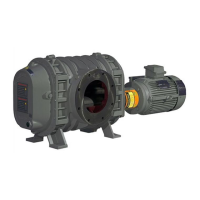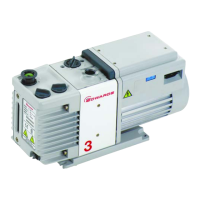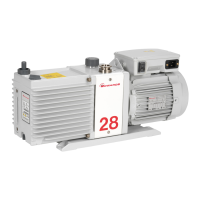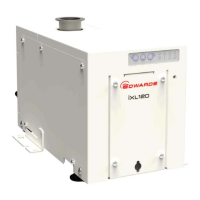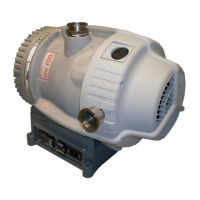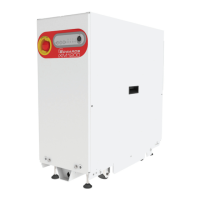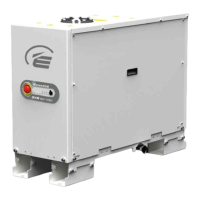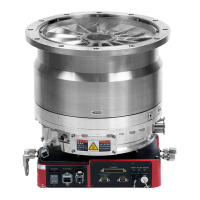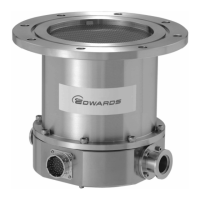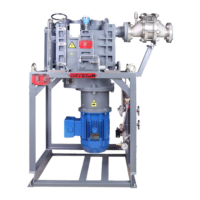© Edwards Limited 2011. All rights reserved. Page 25
Edwards and the Edwards logo are trademarks of Edwards Limited.
Operation
S149-01-880 Issue F
z To maintain a low blank-off noise level on a continuous basis, the valve seal washer can be removed from the
valve stem. This will provide a small amount of ballast at all times even when the valve is fully closed. It will
also break vacuum when the pump is stopped. If the vacuum break is not permissible, solenoid valves may be
installed. With the washer removed and with the gas ballast valve closed, blank-off pressure will be
approximately 200 microns. The seal washer can be reinstalled when ballast on a continuous basis is no
longer required. Care should be taken not to damage the seal washer if reinstallation is anticipated.
4.4 Pump stop
z Close the inlet valve to system.
z Stop the motor and break vacuum unless system dictates otherwise.
Note: The oil solenoid valve closes automatically when the pump is stopped or a power failure occurs. This will
prevent the pump and vacuum system from being flooded with oil.
4.5 Operating notes
If large amounts of air pass through the pump, it may become warm and, under severe conditions, hot. This is not an
indication of malfunction. The pump is designed for high vacuum work and should not be operated at pressures
greater than 533 mbar (400 Torr) for more than 10 minutes or at intermediate vacuums for periods which cause oil
temperature to exceed 93 °C (200 °F).
For optimum pump operation, the oil temperature in the oil reservoir should be 60-71 °C (140-160 °F) with the pump
operating on the system or process. Oil temperature can be measured by inserting a thermometer in the fill hole or
by contact pyrometer on oil block near the solenoid. If the pump is to be operated with oil temperature in excess of
71 °C (160 °F), the use of a heavier viscosity oil is recommended (Refer to Section 3.9).
When starting the pump or handling large amounts of air, oil vapor in the form of smoke will be released from the
exhaust. This is not an indication of trouble. The volume of smoke will decrease as the pressure in the system
decreases.
Note: Edwards offers a closed type oil mist separator that will eliminate exhaust oil smog but still requires
exhausting to outside. Contact a Edwards representative for information.
If the pump has been shut down for an extended period of time, it will be necessary to turn the pump over at least
two (2) revolutions by momentarily jogging before starting to insure the free movement of parts.
Low oil temperature can cause overloading when starting the pump and possibly prevent the pump from sealing.
Microvac pumps should not be started when the oil temperature is below 13 °C (55 °F). Optimum operating oil
temperature after starting is between 60-71 °C (140-160 °F). Opening the gas ballast valve will help to warm the oil.
A water miser (Refer to Section 7.4) is recommended to automatically control the oil temperature. Contact a
Edwards representative for information.

